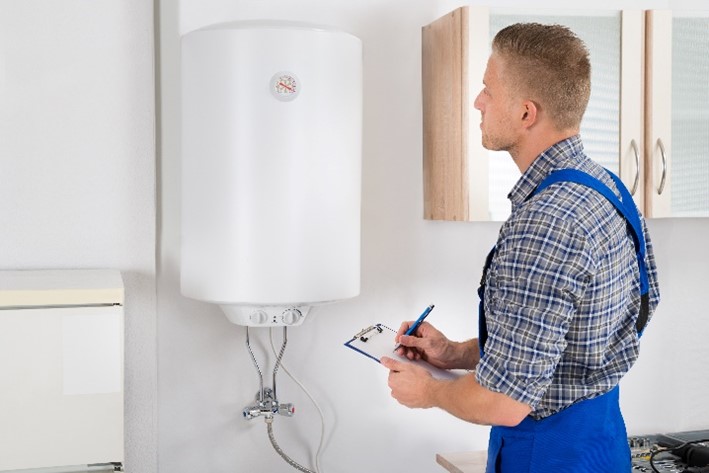Maintaining Your Home's Hot Water System: Important Tips
Maintaining Your Home's Hot Water System: Important Tips
Blog Article
Almost everyone has got their own unique opinion involving How to Maintain a Hot Water Heater in a Few Simple Steps.

Warm water is essential for everyday convenience, whether it's for a rejuvenating shower or cleaning dishes. To guarantee your hot water system runs successfully and lasts longer, regular upkeep is essential. This short article gives useful ideas and understandings on exactly how to preserve your home's warm water system to prevent interruptions and pricey repairs.
Introduction
Preserving your home's warm water system may appear daunting, but with a couple of straightforward actions, you can guarantee it operates efficiently for several years to come. This guide covers whatever from understanding your hot water system to do it yourself maintenance suggestions and recognizing when to call specialist help.
Value of Keeping Your Hot Water System
Regular upkeep not just extends the lifespan of your warm water system yet also ensures it operates successfully. Neglecting maintenance can cause lowered performance, greater energy bills, and even early failing of the system.
Indicators Your Warm Water System Demands Maintenance
Knowing when your hot water system requires focus can protect against significant concerns. Look out for signs such as inconsistent water temperature, odd sounds from the heating system, or corroded water.
Recognizing Your Hot Water System
Before diving into maintenance tasks, it's valuable to comprehend the fundamental parts of your warm water system. Commonly, this consists of the water heater itself, pipes, anode rods, and temperature controls.
Monthly Upkeep Tasks
Normal month-to-month checks can assist capture small problems prior to they intensify.
Purging the Hot Water Heater
Purging your water heater eliminates sediment accumulation, enhancing effectiveness and extending its life.
Checking and Replacing Anode Rods
Anode rods prevent corrosion inside the tank. Inspecting and changing them when worn is vital.
Checking and Changing Temperature Settings
Adjusting the temperature setups makes certain optimum efficiency and security.
DIY Tips for Maintenance
You can execute numerous upkeep tasks yourself to keep your warm water system in leading condition.
Checking for Leaks
Regularly evaluate pipelines and connections for leaks, as these can lead to water damages and greater expenses.
Testing Stress Alleviation Valves
Evaluating the pressure safety valve guarantees it works correctly and protects against excessive stress accumulation.
Insulating Pipes
Shielding hot water pipes lowers warm loss and can save power.
When to Call a Professional
While do it yourself upkeep is advantageous, some issues call for expert proficiency.
Facility Problems Calling For Specialist Assistance
Examples consist of major leaks, electric problems, or if your hot water heater is constantly underperforming.
Routine Specialist Maintenance Conveniences
Expert maintenance can consist of comprehensive assessments, tune-ups, and ensuring conformity with safety criteria.
Final thought
Routine upkeep of your home's hot water system is crucial for effectiveness, longevity, and expense financial savings. By complying with these pointers and understanding when to look for expert aid, you can guarantee a trusted supply of hot water without unanticipated disturbances.
How to Maintain an Instant Hot Water Heater
Before tinkering with your hot water heater, make sure that it’s not powered on. You also have to turn off the main circuit breaker and shut off the main gas line to prevent accidents. Also turn off the water valves connected to your unit to prevent water from flowing into and out of the appliance. 2. When you’re done, you have to detach the purge valves’ caps. These look like the letter “T†and are situated on either side of the water valves. Doing so will release any pressure that has accumulated inside the valves while at the same time avoid hot water from shooting out and burning your skin. 3. When the purge valves’ caps are removed, you have to connect your hosing lines to the valves. Your unit should have come with three hoses but if it didn’t, you can purchase these things from any hardware or home repair shops. You can also get them from retail stores that sell water heating systems. Read the user’s manual and follow it to complete this task properly. When the hosing lines are connected, open the purge port’s valves. 4. You should never use harsh chemical cleaners or solutions when cleaning your unit. Make use of white vinegar instead. It should be undiluted and you’ll probably use about 2 gallons. 5. Now flush your water heater. This task should probably take about 40 minutes. We can’t give you specific directions for this because the procedure is carried out depending on the type, model and brand of your heater. With that being said, refer to the user’s manual. 6. When you’re done draining the unit, you have to turn off the purge port valves again. Remove the hosing lines that you earlier installed on each of the water valves. Put the valve caps (purge port) back in their respective places and be very careful so as not to damage the rubber discs that are found inside these caps. 7. Now that everything’s back in place, check your user’s manual again to find out how to reactivate your water heating system. 8. Once it is working, turn one of your hot water faucets on just to let air pass through the heater’s water supply pipes. Leave the tap on until water flows smoothly out of it. https://www.orrplumbing.com/blog/2014/september/how-to-maintain-an-instant-hot-water-heater/

Do you appreciate reading about Tips on Maintaining a Water Heater? Make a remark below. We'd be happy to find out your views about this article. We hope that you visit us again soon. For those who liked our article please make sure you remember to pass it around. Thank you for going through it.
Booking Report this page